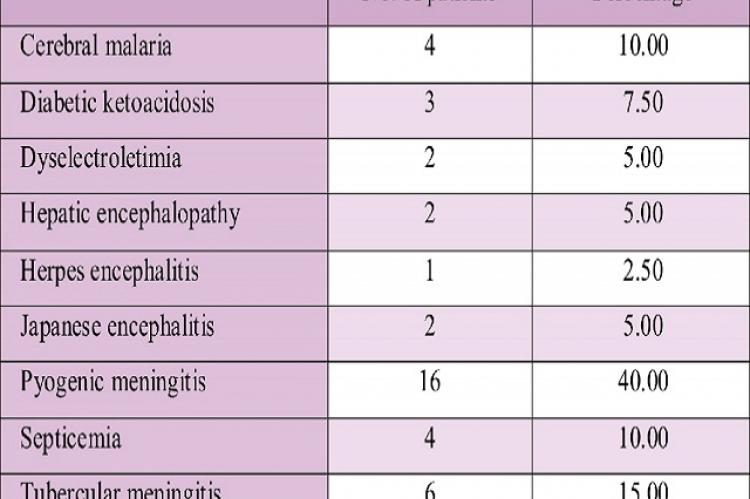An attempt was made to study the etiology, clinical spectrum, laboratory data and mortality / morbidity in children with acute febrile encephalopathy.A prospective hospital based study conducted on 40 patients admitted in Department of Pediatrics, PGIMS Rohtak during the period from March 2013 to August 2014 based on the following inclusion criteria: (1) Age more than 1 month to 14 years and (2) Adiagnosis of acute febrile encephalopathy, based on following criteria: (i) fever (ii) acute depression of consciousness for more than 12 hours with or without motor or sensory deficit and (iii) Total duration of illness at time of admission 1 week or less. The final study group comprised of 40 patients with mean age of 5.84±3.93 years. Maximum number of patients had fever (100%) as presenting complaint followed by convulsions (67.5%) and loss of consciousness (32.5%). Pyogenic meningitis was the major diagnosis seen in 40% followed by tubercular meningitis in 15%, cerebral malaria and septicemia in 10% and diabetic ketoacidosis in 7.50%. A total of nine patients (22.5%) had significant findings on CT Scan. A total of 10 patients out of 22 meningitis patient were found to have neurological sequelae while only two non-meningitis patients had sequelae. The most common sequelae was developmental delay found in seven patients The etiology of acute febrile encephalopathy varies from infectious to non-infectious disorders.The study emphasizes the need for better rehabilitation and disability services in developing countries close to where children live.
View:
- PDF (963.88 KB)


